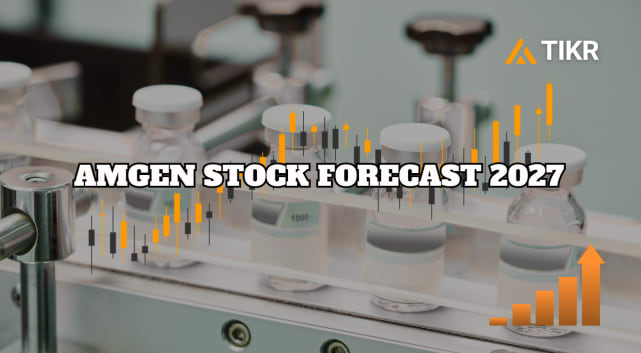If you really want to understand a stock, follow the money, specifically, institutional money. Hedge funds, pension managers, and mutual funds collectively move billions every quarter. When they build or reduce positions, it often signals where professional conviction (or concern) lies long before the headlines catch up.
Tracking institutional ownership isn’t about copying the pros. It’s about context. Seeing which funds are buying, holding, or quietly exiting gives you insight into sentiment, liquidity, and risk appetite. In a volatile market, that information can mean the difference between conviction and confusion.
Yet, for years, access to this data was locked behind expensive terminals and subscriptions. That’s no longer the case. Today, a few high-quality tools make it possible to track institutional moves, for free, with the kind of clarity that used to cost thousands.
Below are five of the best platforms for analyzing institutional ownership, starting with one that combines professional-level data with ease of use better than any other.
Why Institutional Ownership Matters
Institutional investors don’t just move markets, they define them. When ownership concentration rises, volatility tends to fall, and when big funds start to sell, liquidity can evaporate overnight.
Understanding who owns what tells you a lot about risk dynamics. A stock that’s 90% institutionally held might have price stability but limited retail momentum. A company dominated by hedge funds could be prone to quick reversals. Even tracking the top ten holders can reveal strategic alignment, whether it’s long-term pension funds signaling steady confidence or activist funds indicating an upcoming shakeup.
Track company financials, stock value, and competitor information with TIKR (It’s free) >>>
This is where TIKR shines. It centralizes institutional data in a way that’s accessible, visual, and fully integrated into the rest of your valuation and ownership research workflow. You’re not just seeing who holds the stock, you’re seeing how those holdings have evolved over time, and how that behavior connects to price and performance.
Institutional ownership isn’t just a number, it’s a storyline about confidence, control, and capital flow. And these five free tools make it easier than ever to read that story.
1. TIKR – The All-in-One Institutional Ownership Tracker
If you want the most complete view of institutional ownership without paying for a Bloomberg Terminal, TIKR is the best place to start.

Within seconds of typing any ticker, you can navigate to a detailed breakdown of top institutional holders, mutual funds, and insiders, complete with ownership percentages, position changes, and value of shares held. Even more powerful, TIKR tracks the percentage change in the number of shares held, allowing you to visualize when major funds entered or exited.
You can filter by investor type (Investment Advisor, Research Firm, Pension Fund, etc.), and instantly cross-reference this data with valuation metrics, analyst forecasts, and fundamental performance, all in one place. That context is what makes TIKR unique. You don’t just see who’s buying or selling; you understand why it might be happening.
Look up stock ticker info in less than 60 seconds with TIKR (It’s free) >>>
Want to know whether a recent stock rally was fueled by retail hype or institutional accumulation? TIKR’s ownership trend charts show exactly when ownership concentration increased and by whom, giving you immediate insight into market dynamics.
And because the platform integrates ownership with valuation and filings data, you can go straight from “who owns it” to “what it’s worth” in seconds. That’s institutional analysis without the institutional price tag.
2. Nasdaq Institutional Holdings Search
Nasdaq’s free Institutional Holdings portal is a surprisingly underused resource that pulls directly from the same filings institutional investors are required to submit to the SEC.
Each company page lists the total number of institutional holders, aggregate shares owned, and total value of holdings, making it easy to spot when large investors are adding or trimming positions. The data is pulled directly from 13F filings, making it as official as it gets.
You can also dig into individual fund names, share counts, and reported values, making it a great fact-checking companion to more analytical platforms like TIKR. One underrated feature is its ability to compare ownership across multiple reporting periods, letting you see when funds start clustering into or out of a stock.
The tradeoff? Nasdaq’s interface is pretty utilitarian and not visually or interactively engaging. But for investors who want primary-source verification and reliable ownership tallies, it’s an excellent starting point.
Quickly find institutional ownership information with TIKR (It’s free) >>>
3. WhaleWisdom
WhaleWisdom is the go-to site for investors who want to follow the smart money, especially hedge funds. It organizes and analyzes 13F filings by fund, so you can explore the actual portfolios of top managers such as Berkshire Hathaway, Bridgewater, and ARK Invest.
You can sort by new buys, increased positions, or complete exits, and even track the historical performance of a fund’s holdings. It also lets you filter by sector, position size, and time frame, making it one of the most flexible tools for identifying trends in institutional positioning.
While the free tier limits deep historical data, it still gives you a strong sense of direction, which funds are building stakes in small caps, which are trimming exposure to overvalued tech, and where capital is rotating. The platform even provides “whale trends,” showing which stocks appear most frequently across top-performing hedge fund portfolios.
It’s perfect for investors who want to identify themes early and then confirm those trends in TIKR’s ownership charts for additional context.
Estimate a company’s fair value instantly (Free with TIKR) >>>
4. Fintel – Simple, Structured Summaries
Fintel brings transparency and breadth to institutional ownership research, offering a data-rich look at who owns what and how much conviction they have.
Its ownership breakdowns distinguish between mutual funds, hedge funds, pensions, and other entities, giving you a sense of which types of investors dominate a stock. You can also track changes in position size and view quarterly turnover, an underrated way to measure whether institutions are long-term holders or short-term traders.
One standout feature is its Fund Sentiment score, which compares institutional support relative to peers in the same sector. This helps you gauge whether a stock’s investor base is particularly strong or vulnerable. Combine that with short-interest data, insider transactions, and ETF exposure, and you get one of the most complete free ownership snapshots available.
While some of Fintel’s advanced metrics are behind a paywall, the free tier still provides actionable insights, mainly when used alongside TIKR to add context to valuation and performance.
5. HoldingsChannel
HoldingsChannel is straightforward but effective, a great option for investors who want a no-frills way to check the basics. It compiles 13F filing data into easily searchable lists, showing which institutions own a given stock and how those holdings have shifted since the last quarter.
While it doesn’t offer the interactive charts or contextual analysis of TIKR, it’s still a useful resource for quick, factual ownership verification. Think of it as the “fact-check” companion to your research workflow, ideal for confirming large changes or identifying when a major holder appears or disappears from a position.
For investors who prefer simplicity and speed, HoldingsChannel delivers exactly that.
Explore what stocks hedge funds are buying with TIKR (It’s free) >>>
TIKR Takeaway
Institutional ownership can be a powerful signal, but only if you understand what it represents. One large fund selling doesn’t necessarily mean trouble, and a wave of new buyers doesn’t guarantee future gains. What matters is the pattern: who’s building positions, who’s trimming exposure, and how those moves align with fundamentals and sentiment.
TIKR gives investors a front-row seat to that story. It connects ownership trends with valuation metrics, earnings data, and insider activity, creating a complete picture of how smart money interacts with every stock in your portfolio.
When you can see all that in one place, your decisions stop being guesses and start being informed judgments. That’s how institutional-level insight becomes accessible and actionable for everyone.
Value Any Stock in Under 60 Seconds (It’s Free)
With TIKR’s new Valuation Model tool, you can estimate a stock’s potential share price in under a minute.
All it takes is three simple inputs:
- Revenue Growth
- Operating Margins
- Exit P/E Multiple
If you’re not sure what to enter, TIKR automatically fills in each input using analysts’ consensus estimates, giving you a quick, reliable starting point.
From there, TIKR calculates the potential share price and total returns under Bull, Base, and Bear scenarios so you can quickly see whether a stock looks undervalued or overvalued.
Find out what your favorite stocks are really worth (Free with TIKR) >>>
Looking for New Opportunities?
- Discover which stocks billionaire investors are purchasing, so you can follow the smart money.
- Analyze stocks in as little as 5 minutes with TIKR’s all-in-one, easy-to-use platform.
- The more rocks you overturn… the more opportunities you’ll uncover. Search 100K+ global stocks, global top investor holdings, and more with TIKR.
Disclaimer:
Please note that the articles on TIKR are not intended to serve as investment or financial advice from TIKR or our content team, nor are they recommendations to buy or sell any stocks. We create our content based on TIKR Terminal’s investment data and analysts’ estimates. Our analysis might not include recent company news or important updates. TIKR has no position in any stocks mentioned. Thank you for reading, and happy investing!








